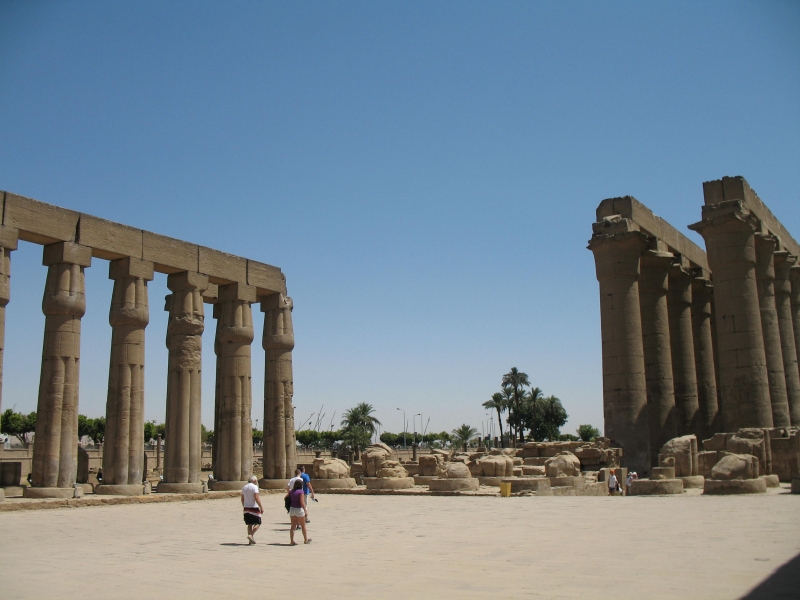Luxor and The Nile
Posted June 12, 2007 by JanLuxor: Temples and Tombs
The guidebook gushes with the following descriptive terms for this 4000 year old city of ancient Thebes: "staggering ancient splendor, extraordinary, compelling, spectacular, massive, and strikingly graceful." * For once I agree 100%.
My first stop, and my favorite, is the Luxor Temple. The temple is filled with wall writings and pictorial carvings and enormous statues of the Pharaohs: Amenhotep III, Tutankhamen, Ramses II, Nectanebo. Even Alexander the Great and various Romans (Marc Anthony?) added their touch.

